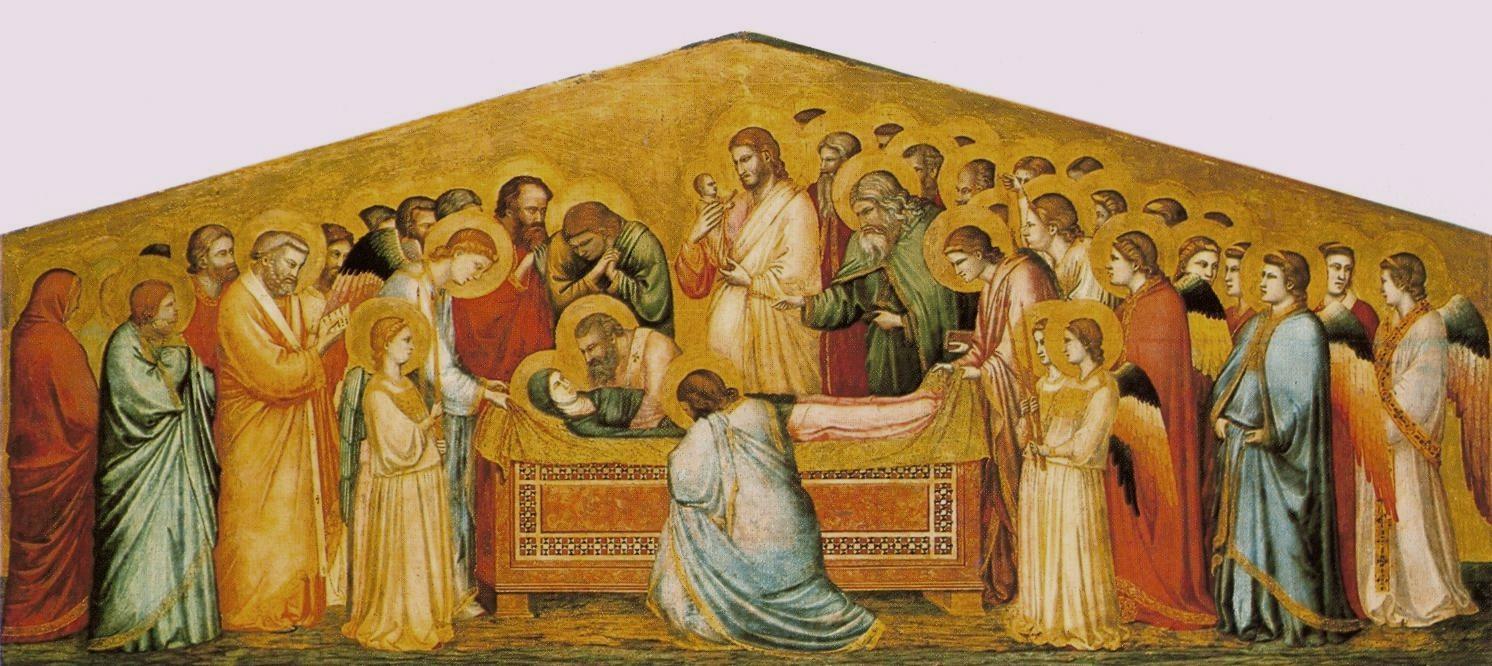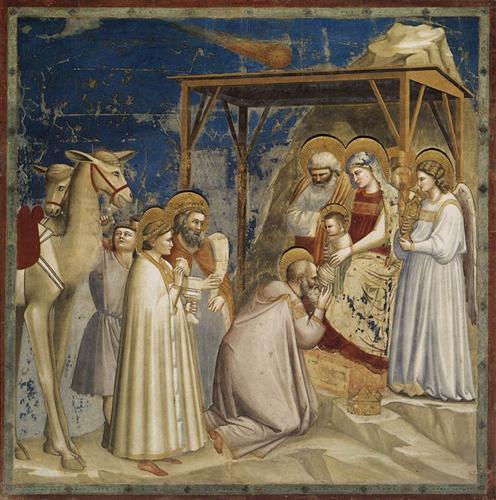
How can we place Giotto in his historical context? One of the new artists to promote linear perspective, emotion, architectural design (see the building above) through partition and lunettes (that half-circle frame above) in his large fresco paintings, he also was a product of his time. That is, part of looking at artifacts, is also taking a moment to see the interconnections with what is happening in society. At the Bardi chapel in Florence, a chapel within the larger Basilica of Santa Croce, we have the intersection of wealth and poverty, religion and secular society, and the inspiration of the past. Commissioned by the Bardi family, Giotto (and likely his team) painted scenes from the life of St. Francis of Assisi from 1325-1328. This chapel served as a reminder of the past, a status symbol for the Bardi, and an intimate connection to an inspirational saint. In a single fresco, we must consider the artist, the subject, and the family who commissioned it and to understand how it represents the 1300s. In this scene, St. Francis signals that his obedience rests with God and the church, while stripping off his familial clothes that represented wealth and society. Being "naked like a naked Christ" was a popular theological phrase to indicate affinity between two religious beings, God and oneself. So even though St. Francis is literally stripping down, its meaning is more religious than the impact of seeing Francis' armpits, ankles, and slight musculature. Still it is dramatic--which is the intent of art, right?
Why is this image of such high priority? For one, it represents the lessons of religion, charity, and openness to removing oneself from secular power. Secondly, it allows viewers to partake of that moment, and witness a renunciation of power, inviting others to do so as well. But 1300s Italy, and particularly Italian city-states were quite wealthy--as were the 1200s, so that even Francis' dad was a wealthy cloth-merchant. A special few walked away from power, while many remained within secular society. Such images are useful reminders of another life choice that is possible, and yet, if one does not choose that path, one can also look at it and remind oneself of how others have sacrificed. The Bardi family made their money as bankers. Their banking business stretched from Naples to England. To commission an entire chapel dedicated to Francis of Assisi is their way to contribute to, and link to, the religious world; literally we are voyageurs into this dispute between the secular and religious world and the architectural framing reminds us that we are viewing this moment (kind of like a TV set). Yet, we can also walk away from the Bardi chapel and return to our homes. Looking at St. Francis, with his gold halo, we are reminded of what it means to be truly holy (and perhaps thankful it was him, not us?). Perhaps the intersection of religion and society is much closer than we tend to allow?






